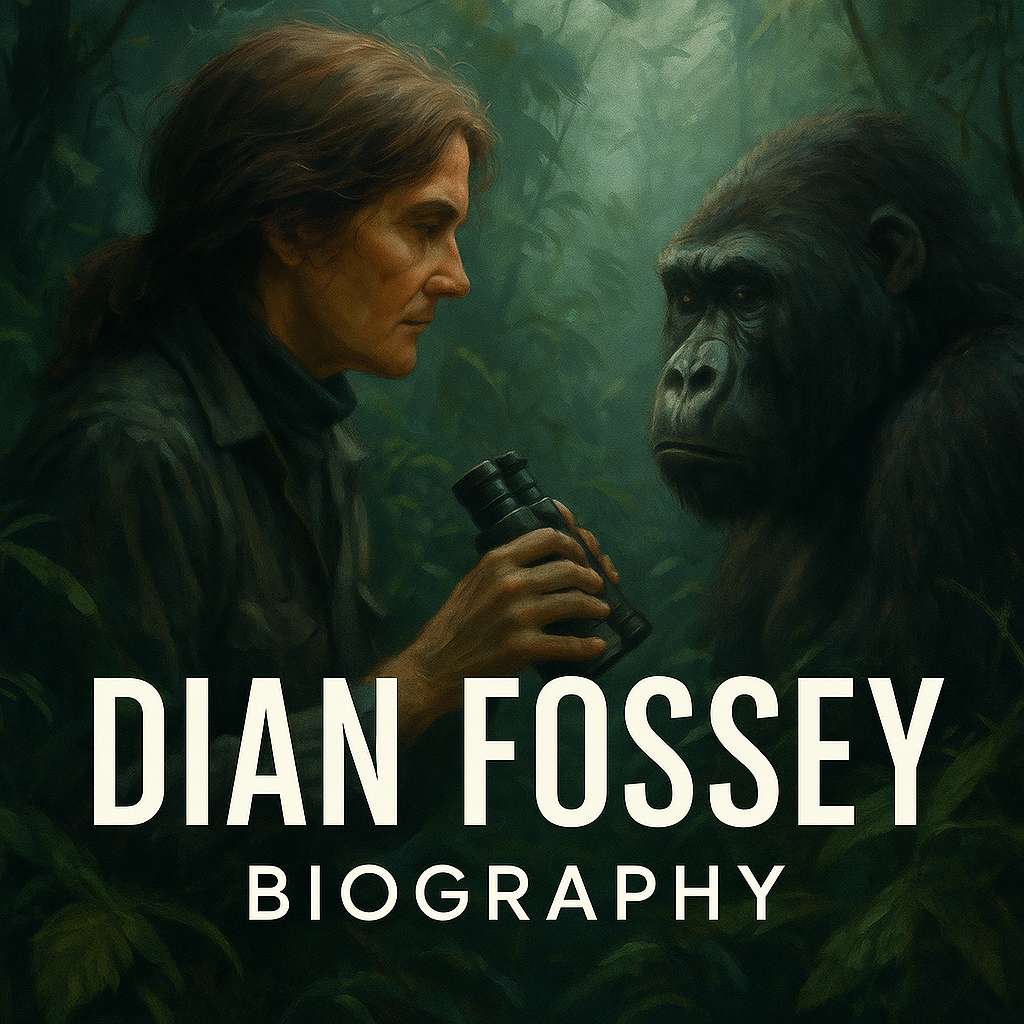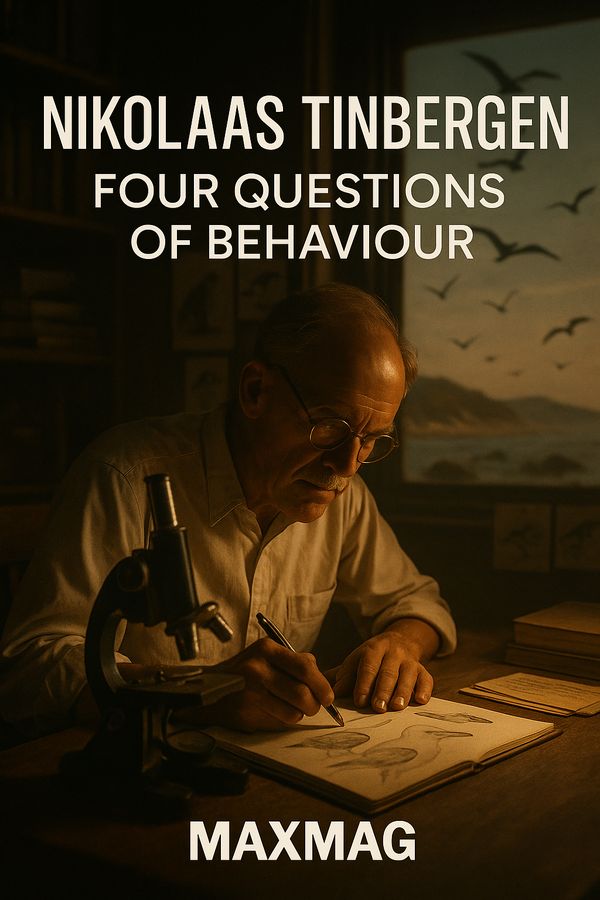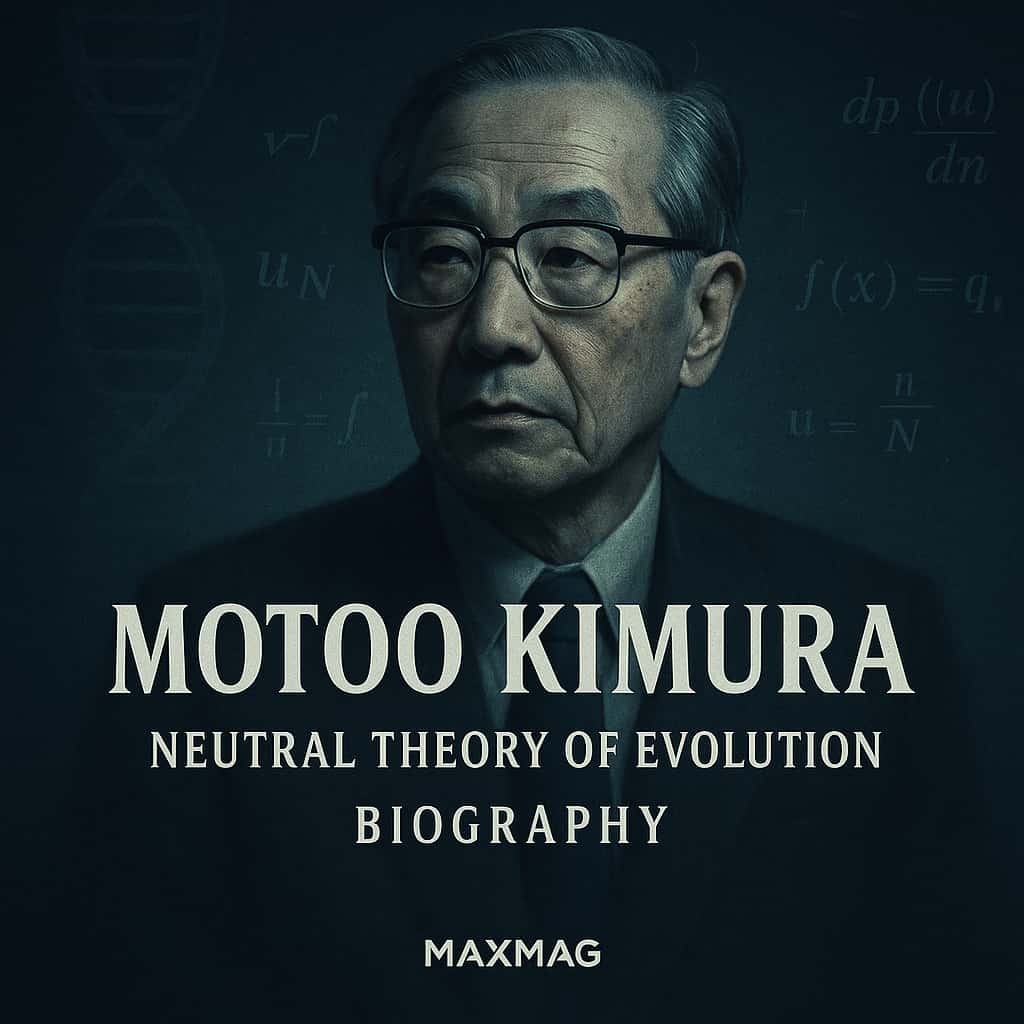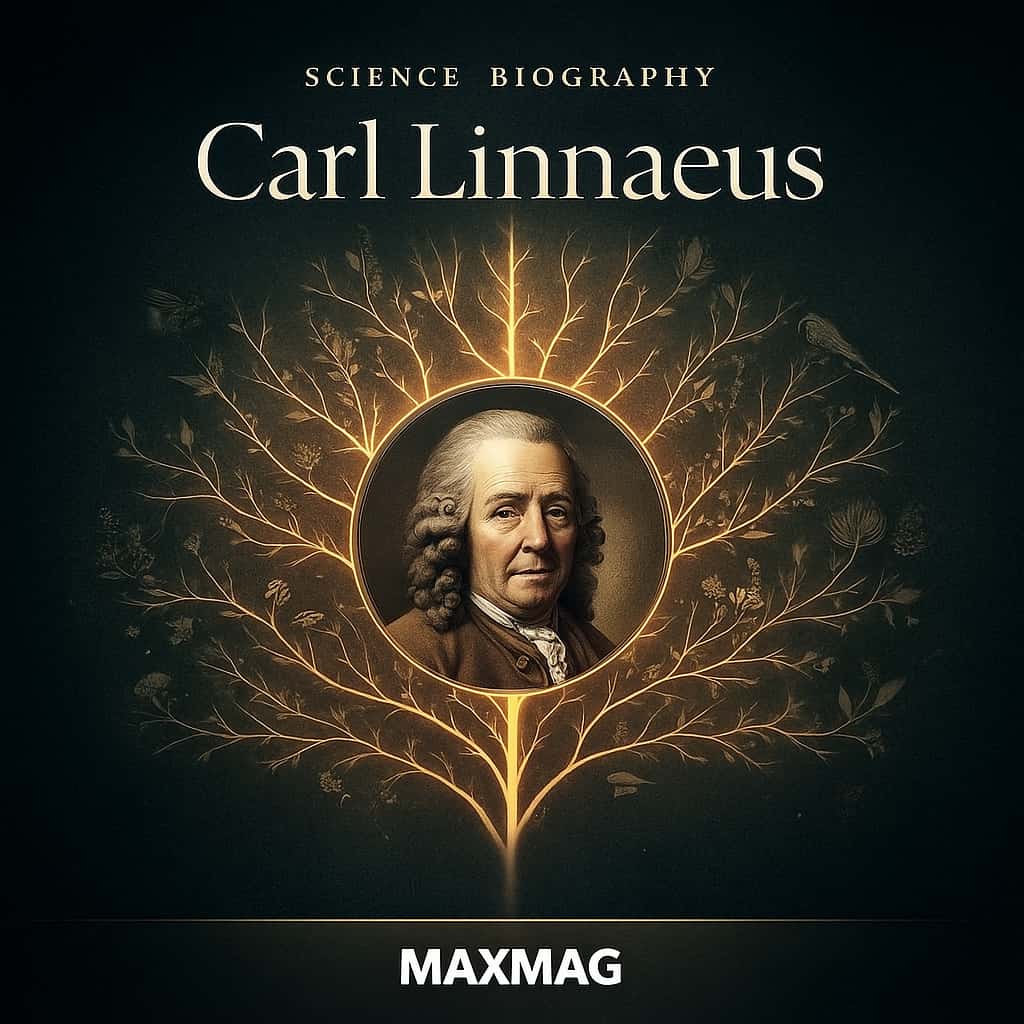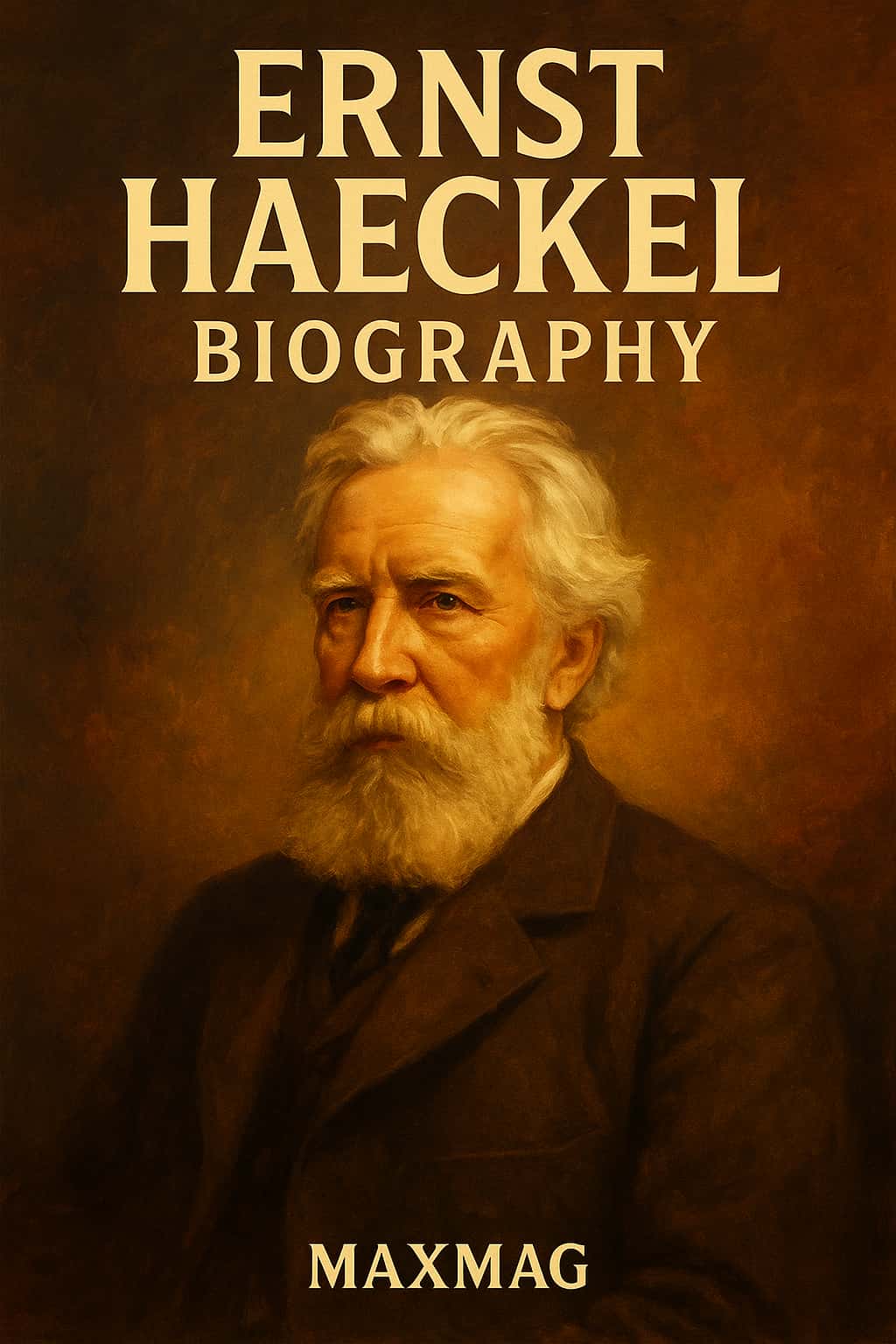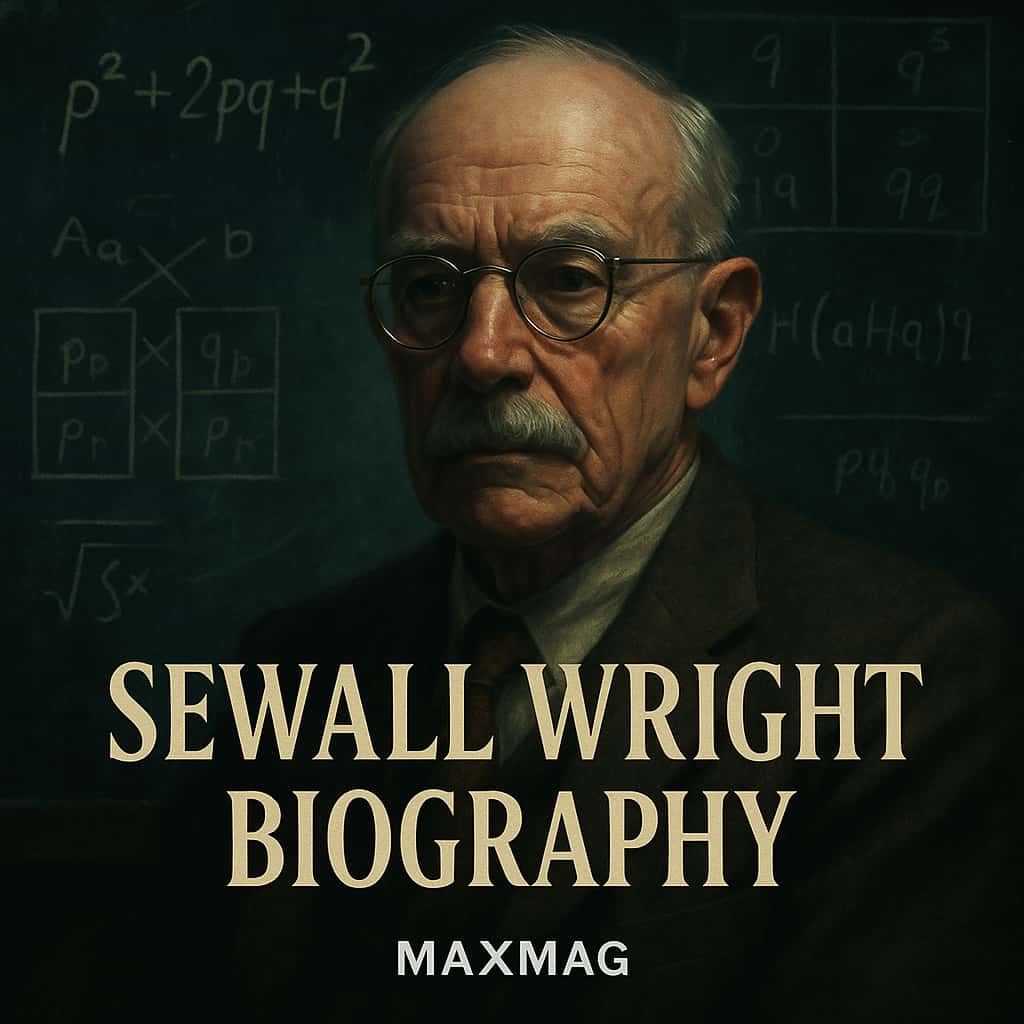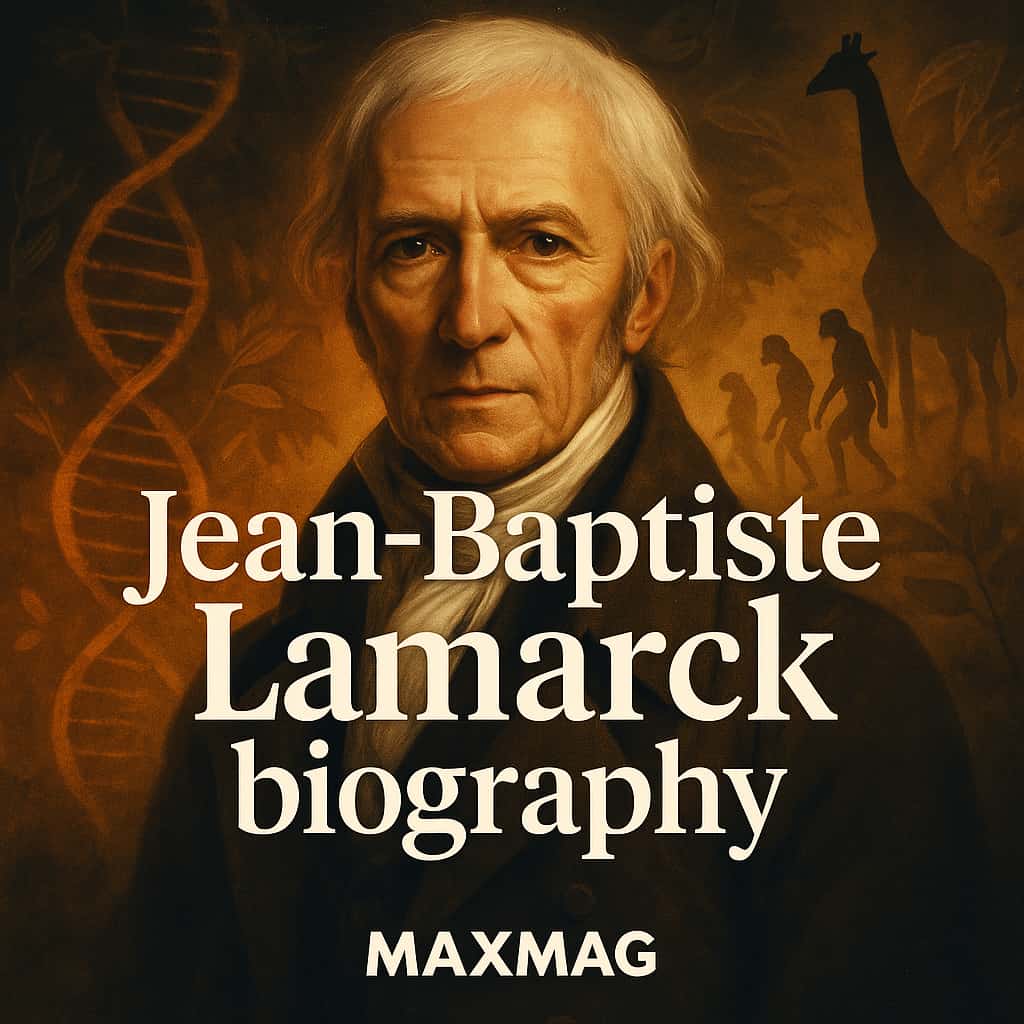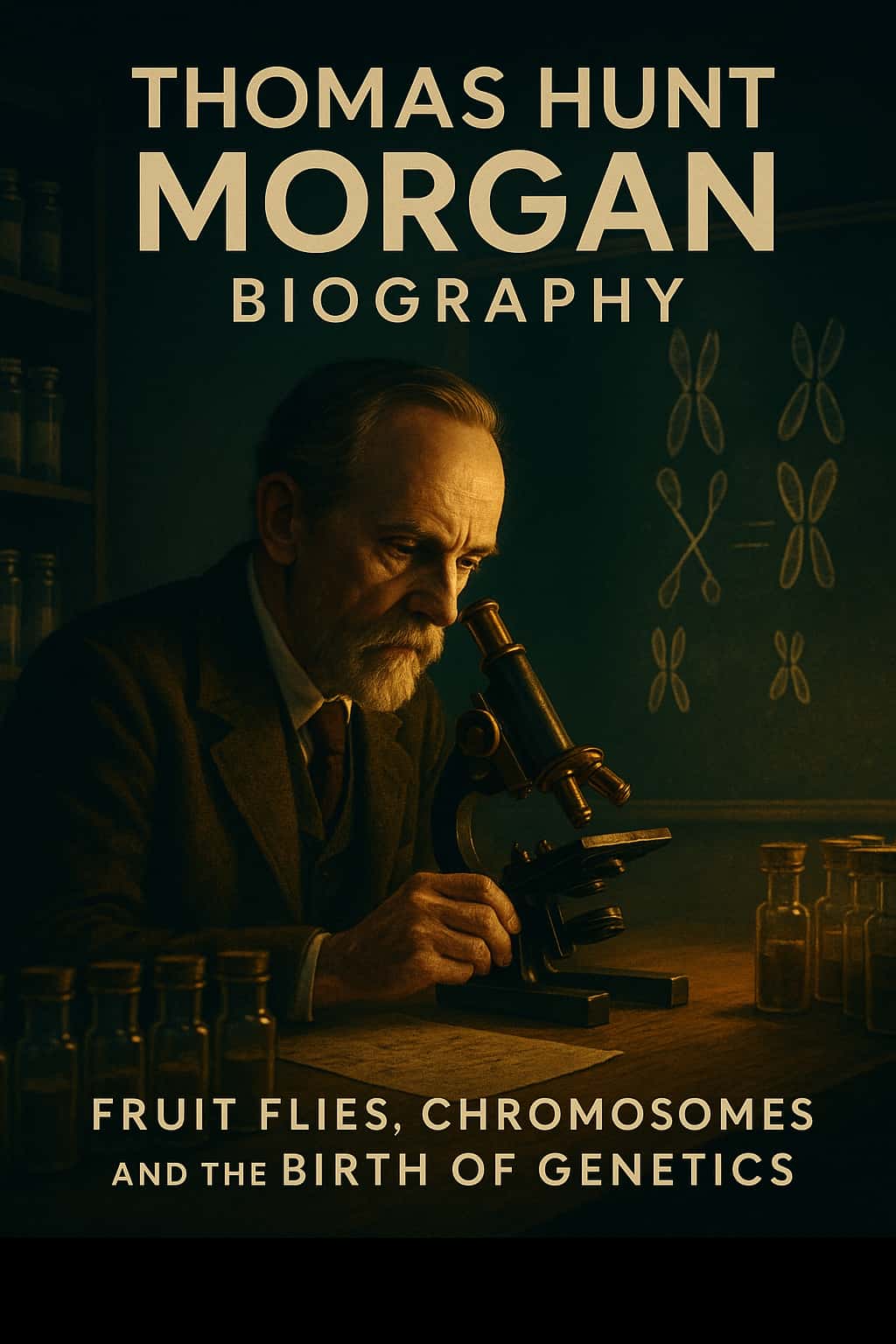
Any Thomas Hunt Morgan biography begins in a cramped New York classroom that smelled faintly of yeast and overripe bananas, where glass bottles buzzed with tiny fruit flies and a handful of young scientists were quietly rewriting the rules of heredity. Before that room at Columbia University gained the legendary nickname “the Fly Room”, the idea that invisible “factors” lived on chromosomes was controversial, fragile and, to many, frankly implausible. By the time Morgan and his students were done, those factors had a new name – genes – and biology itself had become an experimental science of prediction rather than description.
The Thomas Hunt Morgan biography is not just the story of a patient man watching insects under lamplight. It is a story of a sceptic turned genetics pioneer, of a Southerner shaped by post-Civil War hardship who helped launch the chromosome theory of heredity, and of a teacher whose students would carry his methods into the age of DNA and molecular biology. To follow his path is to trace the history of genetics from sea spiders to fruit flies, and from Victorian natural history to the high-tech laboratories of today.
Thomas Hunt Morgan at a glance
- Who: Thomas Hunt Morgan, American geneticist and embryologist, Nobel laureate in Physiology or Medicine (1933).
- Field and era: Experimental zoology and genetics in the early 20th century, a formative period in the history of genetics.
- Headline contribution: Proved that genes reside on chromosomes through fruit fly experiments, establishing the gene–chromosome theory of heredity.
- Why he matters today: His work turned Drosophila melanogaster into a model organism and helped create the framework used by modern genetics and medical research.
Early Life and Education in the Thomas Hunt Morgan biography
A Kentucky childhood behind the Thomas Hunt Morgan biography
Thomas Hunt Morgan was born in 1866 in Lexington, Kentucky, into a family deeply marked by the American Civil War and the fading world of Southern plantations. His relatives included Confederate officers and early American politicians, a lineage that carried status but, after the war, fewer material advantages. The young Morgan grew up amid stories of lost causes and changing fortunes, but what caught his imagination was not politics, it was the living world: birds in the hedgerows, fossils in creek beds, strange insects under stones.
At the State College of Kentucky, now the University of Kentucky, he threw himself into the natural sciences. He collected specimens for the U.S. Geological Survey, sketched marine animals, and filled notebooks with careful observations. This early passion for natural history would later give the Thomas Hunt Morgan biography its distinctive blend of old-fashioned fieldwork and laboratory-based experimental genetics. He was not the sort of scientist who fell in love with equations first; he fell in love with animals and then went looking for their hidden rules.
From sea spiders to experimental biology
After graduating, Morgan headed to Johns Hopkins University for graduate work in zoology, a relatively new and ambitious programme in a country just beginning to take scientific research seriously. There he studied embryology, focusing on obscure but revealing creatures such as sea spiders. His doctoral work on how their embryos developed was rigorous and painstaking, and it established him as a careful, critical thinker in a field still dominated by descriptive anatomy.
This early phase of the Thomas Hunt Morgan biography belongs squarely to the 19th-century tradition of morphology: mapping and comparing structures, drawing diagrams of embryos and adult forms, and arguing about evolutionary relationships. Yet even then, Morgan was drawn to questions that required explanation, not just description. How did a fertilised egg, just a single cell, reliably become a complex creature? Could those processes be understood in physical and chemical terms, or were they governed by some vital force beyond measurement? These questions about development and regeneration would stay with him even as he became better known for genetics.
Thomas Hunt Morgan biography and the birth of his big ideas
Naples, German schools of thought and a turn toward mechanism
A crucial chapter in the Thomas Hunt Morgan biography unfolded far from America’s shores, in the laboratories of Naples and other European centres of experimental biology. In the 1890s, Morgan joined a generation of young scientists who were rebelling against vague, philosophical explanations of life. They embraced Entwicklungsmechanik – developmental mechanics – an approach that treated embryos as physical systems whose behaviour could be manipulated and measured.
Working alongside figures like Hans Driesch, Morgan cut and rearranged embryos, shocked them, and watched how they repaired themselves. Regeneration and grafting experiments on worms, frogs and fish convinced him that biological development obeyed rules, even if those rules were still obscure. This period marks his transformation from a descriptive zoologist into an experimentalist, laying the groundwork for a genetics pioneer who would later insist that heredity, too, must be approached as a problem in physical science, not metaphysics.
From sceptic of Mendel to architect of the chromosome theory
When the “rediscovery” of Gregor Mendel’s work swept through European science around 1900, Morgan was not immediately impressed. Early in the Thomas Hunt Morgan biography as a public scientist, he was wary of neat ratios and abstract “factors” that seemed disconnected from visible chromosomes. Many biologists, steeped in the continuous variation of Darwinian evolution, shared his doubts. Could inheritance really be broken down into discrete units that behaved like mathematical variables?
Morgan’s scepticism was productive. Because he did not take Mendel on faith, he demanded stronger evidence that these invisible units existed and that they could be tied to specific structures in the cell. It was this demand for proof that would eventually drive him into the Fly Room, where the Thomas Hunt Morgan biography intersects with the birth of modern experimental genetics. What began as cautious criticism of Mendelian enthusiasm gradually turned into a quest: to see whether heredity could be pinned to chromosomes, one mutation at a time.
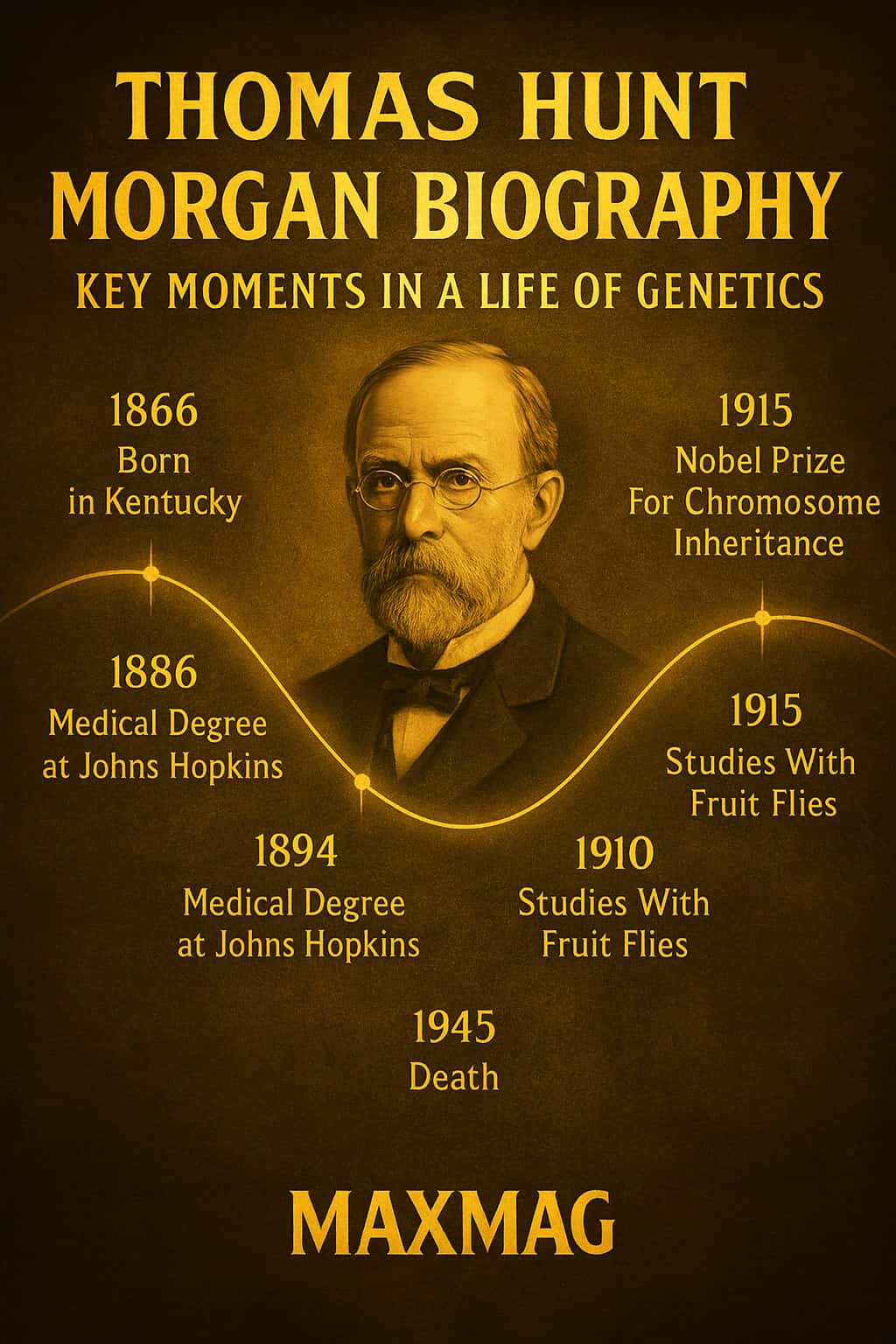
Key Works and Major Contributions of Thomas Hunt Morgan
The Fly Room that defines the Thomas Hunt Morgan biography
When Morgan took up a post at Columbia University in 1904, he inherited not only a classroom but an opportunity. On the top floor of the biology building, in a cramped, stuffy space that students jokingly called the Fly Room, he began breeding the common fruit fly, Drosophila melanogaster. It was a practical choice: fruit flies reproduce quickly, are easy to keep, and occasionally throw up natural mutants with distinctive traits. It was also, in retrospect, one of the decisive choices in the history of genetics.
The famous moment in the Thomas Hunt Morgan biography came when a white-eyed male fruit fly appeared in a bottle that had previously contained only red-eyed flies. Morgan bred this mutant with normal females. The first generation all had red eyes, but in the next generation, white eyes reappeared – and, crucially, only in males. This pattern was not random; it pointed to a sex-linked trait carried on the X chromosome. Here was concrete, experimental evidence that a specific trait mapped to a specific chromosome, a vital step toward the chromosome theory of heredity.
Morgan’s group did not stop there. By tracking hundreds of mutations – miniature wings, curled bristles, altered body colour – and measuring how often traits were inherited together, they inferred that genes were arranged linearly along chromosomes. Different students focused on different traits, and together they created the first genetic maps, with distances measured in “map units” that reflected how often genes were separated by crossing over. For a modern reader of a Thomas Hunt Morgan biography, these maps can seem almost quaint, yet they were revolutionary: invisible genes suddenly had a position and a distance, like towns along a railway line.
One of the clearest summaries of this era is preserved in the landmark book The Mechanism of Mendelian Heredity, which Morgan wrote with Alfred Sturtevant, Calvin Bridges and Hermann Muller. It set out the gene–chromosome theory in accessible form and helped establish genetics as an autonomous discipline. For a concise, classroom-oriented account of his life and experiments, the Cold Spring Harbor DNA Learning Center offers a helpful overview of Morgan’s work with fruit flies and the gene–chromosome theory of inheritance in their educational profile of him (Cold Spring Harbor DNA Learning Center biography of Thomas Hunt Morgan).
Books that shaped 20th-century biology
The Thomas Hunt Morgan biography is not only a tale of experiments; it is also a story of books that shifted the conversation in biology. Early on, Morgan wrote Evolution and Adaptation, reflecting his uneasy relationship with natural selection. He accepted evolution as a fact but doubted that small, continuous variations could fully explain the diversity of life. Later works, such as The Physical Basis of Heredity, moved decisively into genetics, exploring how chromosomes and genes could account for the transmission of traits.
In The Physical Basis of Heredity, Morgan popularised the term “gene”, which had been floating in scientific circles but lacked a firm experimental anchor. By rooting genes in chromosomes and showing how they behaved during meiosis and fertilisation, he helped transform “gene” from a convenient abstraction into a component of a coherent theory. Readers looking at this stage of the Thomas Hunt Morgan biography today can see the transition point where genetics moves from being a set of puzzling ratios into a framework for thinking about all of biology, from development to disease.
Methods, Collaborations and Working Style
The collaborative engine of the Fly Room
Step into the Fly Room as it appears in the Thomas Hunt Morgan biography and you find more than one man at a microscope. You find an ecosystem of collaboration. Bottles clink as they are shifted, a student calls out a new mutant, another updates a chart. Morgan’s laboratory at Columbia became a training ground for a generation of experimental geneticists, including Sturtevant, Bridges and Muller, who would later become major figures in their own right.
Morgan’s style as a lab leader was notable for its mixture of rigour and freedom. He insisted on accurate counts, careful breeding schemes and honest reporting of awkward results, but he also gave his students unusual autonomy. Each took charge of particular traits or crosses, yet they shared data and ideas freely. This model of the research group – not a single genius, but a small, tightly knit community working on a shared set of problems – has become a template across modern science. It is no accident that the Thomas Hunt Morgan biography is often invoked in discussions of how to build creative, productive laboratories.
An experimentalist’s toolkit
Technologically, the Fly Room was modest. No fancy machines hummed in the background. Instead, the Thomas Hunt Morgan biography shows how far a scientist could go with simple tools used imaginatively: hand lenses, microscopes, breeding bottles, and a relentless willingness to count and re-count progeny. The power lay in the design of experiments, not the price tag of the equipment.
Morgan’s insistence on quantitative work – on ratios, frequencies, and statistical reasoning – helped pull biology into line with the standards of the physical sciences. At the same time, his background in embryology ensured that he never lost sight of the organism as a whole. Unlike some later molecular biologists who focused almost exclusively on DNA, Morgan thought constantly about how genes interacted with development, physiology and environment. That balance between reductionism and whole-organism thinking remains part of his methodological legacy in 20th-century science.
Controversies, Criticism and Misconceptions
From critic of Mendelism to champion of the gene–chromosome theory
One of the great ironies in the Thomas Hunt Morgan biography is that he began as a persistent critic of Mendelian genetics. He questioned whether neat 3:1 and 9:3:3:1 ratios observed in pea plants could really capture the messy variation seen in natural populations. He doubted that “factors” could be disentangled from the fluid, continuous changes described by Darwin and his successors. Some colleagues later tried to paint him as an early defender of Mendel against sceptics, but the historical record shows something more interesting: a sceptic who changed his mind in the face of compelling evidence.
This trajectory matters. It reminds readers that scientific consensus is not achieved by instant conversion but by years of argument, counter-examples and painstaking work. The Thomas Hunt Morgan biography dispels the myth that he simply “believed in Mendel” from the start. Instead, he wrestled with the data, accepted what held up under experimental pressure and discarded what did not. His journey from doubt to conviction may be one of the most important parts of his legacy for anyone interested in how science really works.
Morgan, eugenics and the politics of heredity
The early 20th century was an era in which genetics and eugenics were uncomfortably intertwined. In the United States and Europe, some scientists and public figures seized on genetic ideas to justify forced sterilisation, immigration restrictions and racist hierarchies. Within this context, the Thomas Hunt Morgan biography reflects a complex, sometimes conflicted stance. He lived and worked in a culture in which eugenic thinking was pervasive, and he did not always confront it as sharply as a modern reader might wish.
Yet Morgan did reject crude claims that complex traits like intelligence could be neatly pinned to single genes. He warned against simplistic hereditarian arguments and emphasised the limits of genetics when it came to human social policy. Over time, he became more explicit in his criticism of eugenic programmes, particularly as they hardened into state policies. The nuances of his position are still debated in the history of genetics, but it is clear that the Thomas Hunt Morgan biography cannot be told honestly without grappling with this intersection of science and politics.
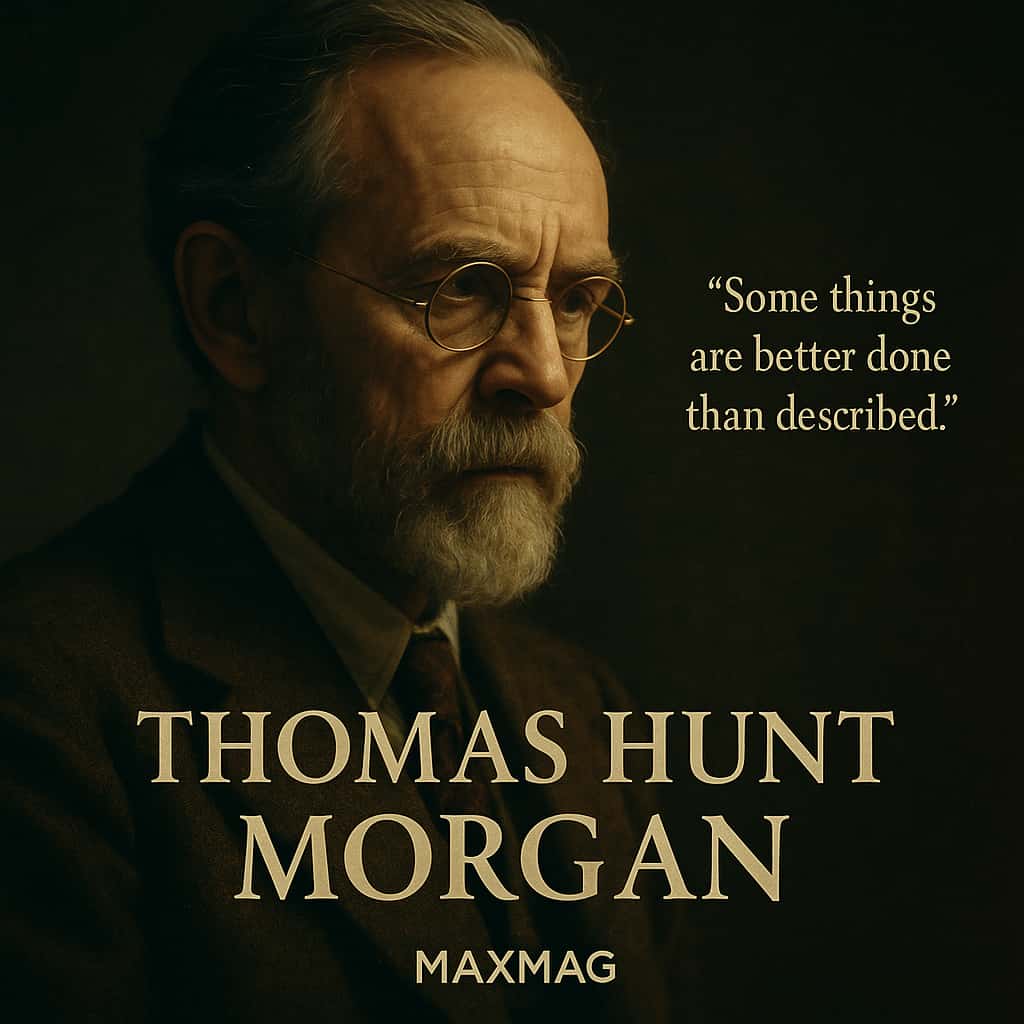
Impact on Genetics and on Wider Society
Building the framework of modern genetics
In scientific terms, the impact of the Thomas Hunt Morgan biography is hard to overstate. By demonstrating that genes occupy specific positions on chromosomes and that their relative distances can be mapped, Morgan and his students provided a physical scaffolding for heredity. This framework allowed later researchers to ask more precise questions: How do genes change? How do they interact? How do they influence development and disease?
The concept of the gene–chromosome complex, born in the Fly Room, is still embedded in every high-school biology textbook. Gene mapping, crossing over, linkage – these are not just historical curiosities but tools used every day in plant breeding, evolutionary biology and medical genetics. When modern researchers trace a disease mutation in a human family or map quantitative traits in crops, they are heirs to the experimental logic first laid out in the Thomas Hunt Morgan biography.
From fruit flies to human health
The choice of fruit flies as a model organism may seem, at first glance, like a narrow decision. But the ripple effects of that decision run deep into contemporary medicine. Work on Drosophila has illuminated pathways involved in development, circadian rhythms, neurodegeneration and cancer. Genes first studied in flies often turn up, in altered form, in human diseases. Decades after Morgan’s death, the organism he championed remains central to research on gene function.
Popular discussions of science sometimes rediscover this heritage. In one televised debate during the 2008 U.S. presidential campaign, politicians sparked controversy by dismissing fruit fly research, prompting scientists to explain how work on flies has shed light on conditions like autism. A CNN transcript capturing that exchange has since been cited as an example of how quickly genetics enters public debate and how easily its importance can be misunderstood (CNN discussion of fruit fly genetics in medical research). Moments like this are indirect echoes of the Thomas Hunt Morgan biography: the tiny insects he made famous still stand at the crossroads of laboratory science and public policy.
Personal Beliefs, Character and Private Life
A reserved teacher with a stubborn streak
The man who emerges from the Thomas Hunt Morgan biography is not flamboyant. Colleagues and students described him as reserved, even shy in large groups, but warm and encouraging in the intimate world of the lab. He favoured reasoned argument over rhetoric and was wary of speculation that outran the data. That did not mean he was timid; on the contrary, he could be remarkably stubborn when he felt that an idea lacked adequate support.
Morgan’s letters and recollections portray a scientist who valued clarity of thought and honesty above all. He disliked jargon and was unimpressed by grand philosophical systems. Instead, he urged students to “find the simplest experiment that can actually decide the question”. The Thomas Hunt Morgan biography, read closely, doubles as a quiet manifesto for a certain kind of scientific character: sceptical but open-minded, cautious but willing to take risks when the evidence warrants it.
Family life and marriage of minds
Morgan married Lillian Vaughan Sampson, herself a trained biologist, in 1904. For many years, she set aside her own research to raise their four children, an all-too-common story in early 20th-century science. Later, however, she returned to the laboratory and contributed significantly to fruit fly genetics, including work on inheritance and sex determination. The partnership between Thomas and Lillian Morgan adds a quieter but important dimension to the Thomas Hunt Morgan biography: scientific discovery as a family enterprise shaped by the gender norms and constraints of their time.
Outside the lab, Morgan enjoyed the sea and spent many summers at the Marine Biological Laboratory in Woods Hole, Massachusetts, where he had once collected sea spiders as a student. There he combined work with long walks, conversations and a naturalist’s eye for tide pools and shorebirds. These summers provided continuity across the different phases of his career, linking the young embryologist to the Nobel-winning geneticist and reminding us that, even as he focused on chromosomes, he never stopped being a naturalist.
Later Years and Final Chapter of Thomas Hunt Morgan
Caltech and the West Coast phase
In the late 1920s, Morgan left New York for the California Institute of Technology, where he was invited to build a new school of biology. This move, often treated as a footnote, is in fact a major episode in the Thomas Hunt Morgan biography. At Caltech he helped integrate genetics, embryology and physiology into a unified programme, recruiting younger researchers who would carry the field into the molecular age.
Although he gradually withdrew from day-to-day fruit fly genetics, Morgan continued to think deeply about development and regeneration. He also took on leadership roles in scientific organisations, serving as president of the National Academy of Sciences and helping to shape research agendas in the United States. The genetics pioneer who had once argued in a cramped Fly Room now found himself navigating the politics of funding, institutions and emerging fields.
Nobel recognition and a modest laureate
In 1933, Morgan received the Nobel Prize in Physiology or Medicine for “discoveries concerning the role played by the chromosome in heredity”. The award cemented his place in the history of genetics, but the way he treated it is telling. He spread the financial reward among his collaborators and family, emphasising that the work had been a group effort. This understated response fits the tone of the Thomas Hunt Morgan biography as a whole: recognition mattered, but not as much as the integrity of the science.
Morgan continued to work well into his seventies, returning to old questions about sex differentiation and embryology. He died in 1945 in Pasadena, California, having lived long enough to see the gene–chromosome theory widely accepted but not long enough to witness the discovery of DNA’s double helix. The story of how molecular biology grew on the foundations he laid belongs to another chapter of science history, but it is hard to imagine without the scaffolding built in his lifetime.
The Lasting Legacy of Thomas Hunt Morgan biography
Why Thomas Hunt Morgan still matters
At first glance, the Thomas Hunt Morgan biography may seem confined to a particular scientific moment: early 20th-century biology, before the age of DNA sequencing, CRISPR and personalised medicine. Yet his influence runs through all of these modern developments. Whenever a researcher locates a disease gene on a chromosome, whenever a graduate student maps recombination frequencies or uses fruit flies to probe a biochemical pathway, they are drawing on tools and concepts that Morgan and his students helped to invent.
Beyond specific techniques, Morgan helped establish a way of doing biology: careful quantification, bold but testable hypotheses, and an insistence that heredity must be grounded in observable structures. The Thomas Hunt Morgan biography shows how a field can be transformed not by a single spectacular discovery, but by a sustained programme of work that links small, precise experiments to big, conceptual shifts. In that sense, his career offers a model for any scientist trying to navigate between narrow technical problems and broad, unifying theories.
For the wider public, understanding the Thomas Hunt Morgan biography sheds light on current debates about genetics, from gene editing to the use of genetic information in medicine and society. It reminds us that today’s controversies have deep roots and that the same tools that offer promise can be misused when torn from their scientific context. To read his life with care is to see how our ideas about heredity, identity and responsibility have been shaped, not just by abstract theories, but by people in specific rooms, counting flies late into the night.


